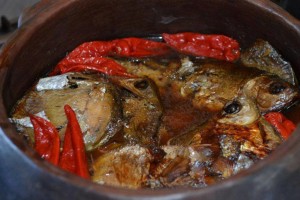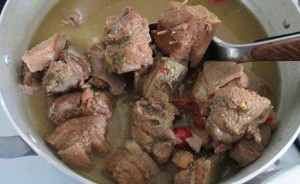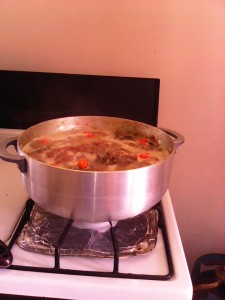
During the September Amerindian Heritage Month, you may have heard of the “tuma pot”. As explained by Michael Patterson, CEO of Tuma Sàlà Restaurant, described as Guyana’s first ever indigenous restaurant, the tuma pot is not an actual pot, a misconception by many, but a variety of meat in a pot.
“The tuma pot refers basically to the meat in the pot, but instead of using cassareep, the cassava water is used. Cassareep is produced after the refining process, where the cassava water is discoloured until dark brown with a more molasses taste and texture. On the other hand, the cassava water is the broth that’s developed on the surface of the water before it’s turned into cassareep. That broth is scooped off to make the sauce for the tuma pot. Very similar to the pepperpot, the tuma pot also includes a variety of meat that is used mainly by the Machusi, Wapishana, Patamonas and the other groups indigenous to Guyana. On the other hand, the pepperpot is used mainly by the Arawak people of the Lokono nation,” Patterson explained in an interview with Guyana Times Sunday Magazine.

“Tuma” refers to meat/fish cooked in the cassava water. The cassava water is referred to “kada” or “kadakura sauce”. So if someone invites you for “labba tuma” then that meal will be labba cooked in “kada” sauce. It is light “cream” in colour with a thinner texture to that of the cassareep. It, however, serves the same purpose of cassareep. Both are self-flavoured and are natural preservatives.
Most Guyanese are familiar with pepperpot rather than tuma pot. The pepperpot is made from cassareep, while tuma pot is prepared in cassava water.
Sometimes a special pot is assigned for the tuma. Traditionally, this pot remains at the fireside and would always have meat or fish inside. Because the tuma pot sauce is a preservative, freshly trapped meat/fish are continuously placed in the pot.




